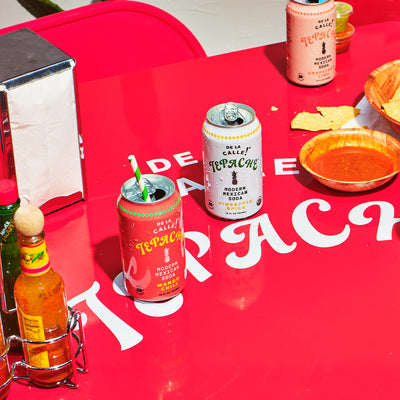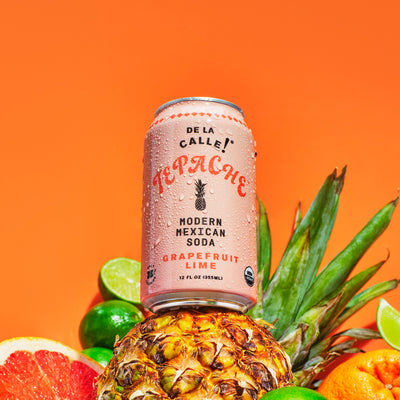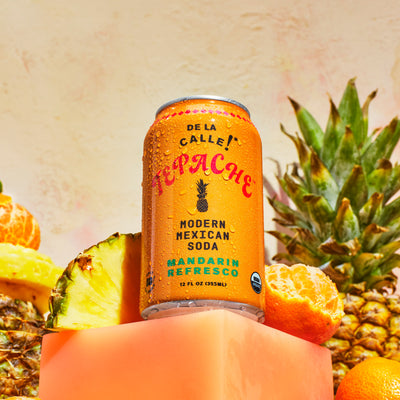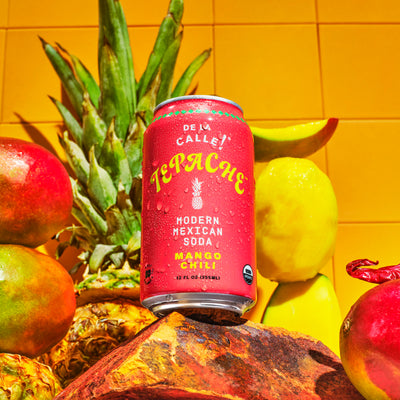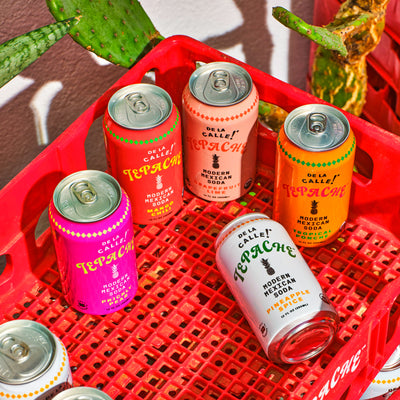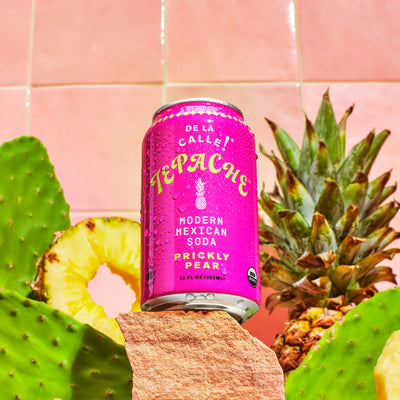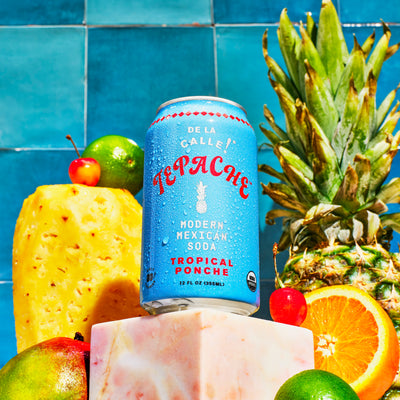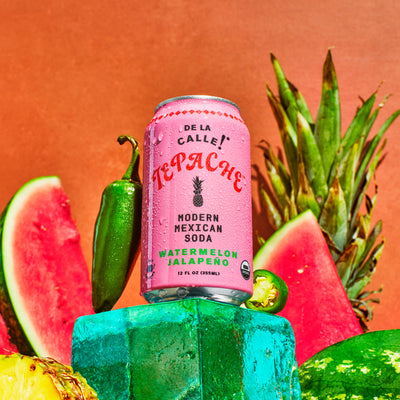Types of Sugar Used in Tepache

Tepache is a fantastic drink option for a variety of reasons. One of those draws is that it is naturally low in sugar.
The sweet pineapple base of tepache is to credit for this low added sugar content. Since pineapple brings the perfect amount of natural sweetness, there is little need to pile on heaps of sugar.
A little bit of sweetness goes a long way. There are a few different ways to sweeten the beverage to your liking when it comes to tepache.
Tepache can be flavored by using certain spices, adding flavor essences, and controlling the amount of sugar added before or after fermentation.
Since tepache can be purchased or brewed at home, the choice is yours when dictating the flavors you want to taste. You can sip on just what you are looking for without having to compromise.
You do not often see brands advertising just how full of sugar their products are, be it syrups, sauces, or simple sugars. The bad reputation sugar gets in the food world is not entirely earned, but not inaccurate either. Too much sugar in any diet poses risks to human health.
For this reason, drinking low-sugar drinks like tepache instead of super-sweet sodas isn’t a bad idea. Plus, tepache remains delicious and refreshing while still offering a sweetness that has our taste buds asking for more.
Let’s explore the different types of sugar used in tepache. Hopefully, this will offer a better understanding of what makes tepache the naturally sweet, refreshing beverage it is.
Plus, should you decide to brew your own batch of tepache, you will have all of the info you need to make the proper sugar selection. Turbinado or white? Let’s find out!
What's the Deal With Sugar?
Although sugar gets a bad reputation, not all sugars are the same. Some sugars even have different basic components.
Glucose
Sometimes, you'll hear sugar referred to as glucose. Glucose is the product of broken-down carbohydrates, and this type of sugar affects your blood sugar levels. It also stimulates insulin release. Instead of being an ingredient in many foods, glucose is found as a byproduct of most foods.
Some foods, like brown rice and beans, are low on the glycemic index (GI) scale. This means they are less likely to spike your insulin levels and safer for those with diabetes, people managing weight gain or obesity, or people prone to cardiovascular disease who are watching their sugar intake.
Fructose
Fructose is an extremely sweet, simple sugar created naturally in fruits. It's sweeter than sucrose, which is why it's so prevalent in artificial sweeteners like high fructose corn syrup. Fructose doesn't affect blood glucose as much as other sugars because it's metabolized by our liver. You can find fructose in coconut sugar and maple syrup.
Sucrose
The next sugar molecule is sucrose, which you likely think of when you think of sugar. Sucrose is table sugar, and it's a disaccharide blend of the monosaccharides glucose and fructose. This is the sugar used when baking confections like cakes, meringues, and cookies.
Funnily enough, honey is also a disaccharide made of glucose and fructose, simply with a 40/30 ratio rather than an even 50/50 blend. Other disaccharides include sugar beets, maltose, and carrots.
You may also hear this coarse sugar referred to as granulated sugar, named for its small crystals. The confectioner's sugar (AKA, powdered sugar or 10X sugar) used to make frosting is also a type of sucrose that has been ground into a fine powder. Caster sugar is similar but slightly larger than powdered sugar.
Pearl sugar, alternatively, is chunks of table sugar that have been compacted to be larger and have a crunchier texture. Sugar cane juice is also a form of sucrose, this time watered down into liquid form.
Both dark brown sugar and light brown sugar are also forms of sucrose, this time mixed with molasses, which is the primary component of gingerbread. The texture and crystal size of sucrose make it ideal for dry mixes. It can also be seen in marinades and syrups.
Lactose
Finally, lactose is another type of sugar, specifically found in dairy products. Another disaccharide, lactose is made of glucose and galactose.
What Is Tepache
Before we get into the different kinds of sugar used in tepache, it is helpful to have a basic understanding of what else goes into our fabulous fermented friend. What exactly is tepache?
Tepache is a fermented beverage. It is a traditional, authentic drink native to Mexico.
The beverage is a refreshing, light, and dynamic drink. Tepache is served chilled, usually over ice.
Tepache is made from the skin and rind of pineapples. In this way, the drink is also upcycled. Pineapple rinds that would otherwise be thrown away can be utilized. The process of going from rinds to refreshments is relatively simple!
To make tepache, all you have to do is ferment your pineapple rinds in a pitcher of water for about a day. In the pitcher, combine the rinds of one entire pineapple, the sugar of your choice, and cloves/cinnamon or any other spices to your liking.
A white foam will form on the top of your fermentation. Scrape off the foam and get to enjoying your homemade tepache!
If you’re interested in the brewing process, the following are the most common sugars used in brewing tepache.
Piloncillo Sugar
Piloncillo sugar is often used in home-brewed batches of tepache. Many refer to piloncillo as Mexican brown sugar, though this is not entirely accurate.
Though brown in color, piloncillo sugar is very different from brown sugar. Brown sugar is typically refined white sugar with molasses added. Piloncillo sugar, on the other hand, is entirely unrefined. This sugar has been a staple in Mexican cooking for over 500 years.
Piloncillo sugar offers an earthy, caramel, intense flavor. The flavor is stronger than the molasses-sweetened brown sugar it is often compared to.
Traditionally, piloncillo sugar is bought pressed into blocks, cones, or loaves.
Turbinado Sugar
The next kind of sugar often used in tepache is turbinado sugar. This sugar is also easily mistaken for the common brown sugar, but they’re not quite the same.
Turbinado sugar has much larger, crunchier crystals than the brown sugar we are used to seeing. Turbinado sugar has a gentle caramel flavor and coloring. With its large crystals and subtly caramel sensation, turbinado sugar is often used to top different kinds of baked goods.
This sugar is often more expensive than other white sugars commonly found in stores. Part of the reason is its reputation as being a more “raw” form of sugar.
For this reason, turbinado sugar is a great option as a sweetener for a variety of things. Both food and beverages do well with turbinado sugar. Turbinado sugar, in part thanks to its large crystals, is also often used as a spice rub. It is a versatile ingredient.
Turbinado sugar sweetens tepache without the heavy molasses flavor of brown sugar.
The less processed, down-home feel of turbinado sugar adds to the celebration of tepache’s authenticity and tradition.
Turbinado is a great option for a tepache sweetener. Even still, there are more alternatives.
Other Sugar Options
Though piloncillo and turbinado sugars are the most common sweeteners used in tepache, they are not the only ones.
Most commercial tepache uses those sugars. However, when/if you brew tepache, the choice is yours.
Though it is far less common to do so, tepache can also be sweetened with white cane sugar. This may detract from the caramel flavor offered by the other sugars, but it is still an option.
Brown sugar can also stand in for a tepache sweetener. In addition, should you wish to replace your sugar with a synthetic option, that can work as well. Stevia and Splenda are options, though certain the least traditional of the bunch.
Simply Sweet!
Tepache is a versatile beverage, and as such, the sweetener used in it does not have to follow any strict rules. However, turbinado and piloncillo are definitely the most traditional options.
Tepache itself is a naturally sweet drink, so the addition of sugar should not worry you too much. This beverage is refreshing and delicious.
No matter which sugar you sprinkle into your tepache, be sure to enjoy a sweet sip with De La Calle!
Sources:
Sugar Definition & Meaning | Merriam-Webster

